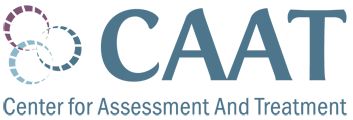Educational Planning
One of the most useful ways CAAT can support young people and their families is by helping to maximize the benefits available through student school programs. We help clients and partner with parents to recommend educational services and plan interventions that support individual student challenges within the academic environment. Our clinicians frequently accompany parents to educational planning meetings in both public and independent school settings.
IEP/504 Plans and Implementation
For students who need special education services in public school, we are available to attend school meetings and make the case for student eligibility to receive services. We also help to write and revise Individual Education Programs (I.E.P.) and review student progress to assess ongoing needs – especially helpful for students during periods of school transition (i.e. elementary to middle school, middle to high school) or changes in school environment (new educational setting).
CAAT clinicians routinely work in conjunction with educational consultants. We are extensively networked with area public and independent schools, which enables us to help parents make informed decisions about educational placement for their unique learner.
School Observations
CAAT clinicians frequently conduct in-school observations for clients. Witnessing firsthand a student’s behavior, adaptability, interactions with peers and educators helps us to more fully understand a child’s needs and assess their adjustment within a school setting. Observational data gathered by in-person school visits and consultations with school teachers or administrators can highlight a student’s needs and evaluate the implementation of services, ensuring successful outcomes from planned academic intervention.
As part of the evaluation process within our Developmental Clinic, CAAT clinicians conduct in-school observations for young children in pre-primary school settings. By gaining insight into a child’s social and pedagogical navigation through a “typical day,” our assessment provides a fuller picture of cognitive and social-emotional development. This holistic view informs the treatment planning and prioritization of individual services for each client.
Identifying and Addressing Learning Disorders
Often students with autism spectrum or other social disorders have difficulty with academic learning and/or school performance. Research shows the prevalence of learning disabilities among individuals with ASD may be as high as 67%. Children and teens on the spectrum can have trouble distinguishing main ideas from supporting detail in academic material and struggle to understand the social logic of fiction or interpret the language in textbooks. Almost all students with social disorders struggle with the organizational aspects of written composition and find it hard to write in a way that a reader will easily understand.
We are committed to identifying and determining effective ways to approach learning disorders, as we have found that trouble with school learning and work production (particularly when it goes unidentified and/or untreated) often creates as much stress, frustration, and discouragement for students on the spectrum as their social difficulties do. One of the major goals of our evaluations is therefore to identify any existing learning disabilities and to help students with social disorders gain the services they need to address them.
